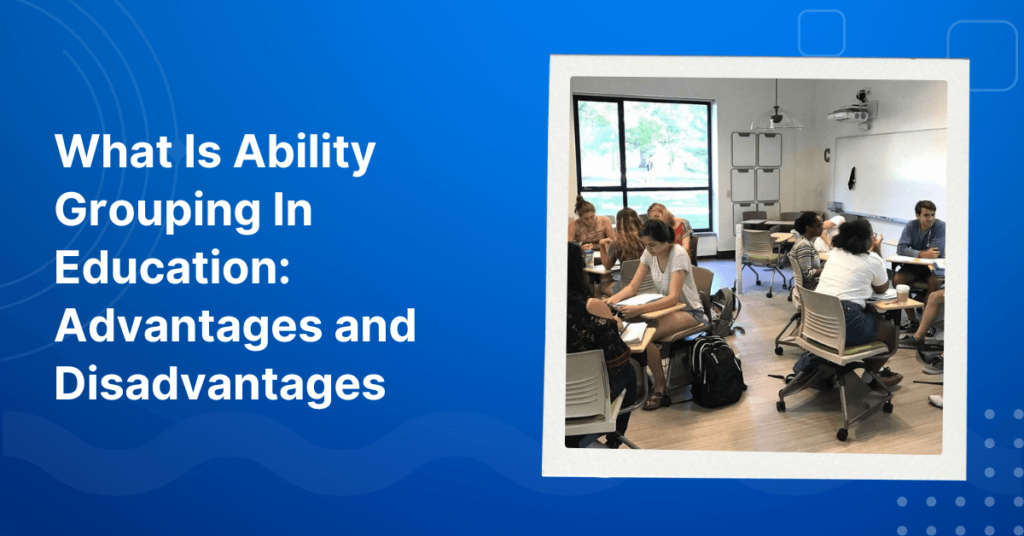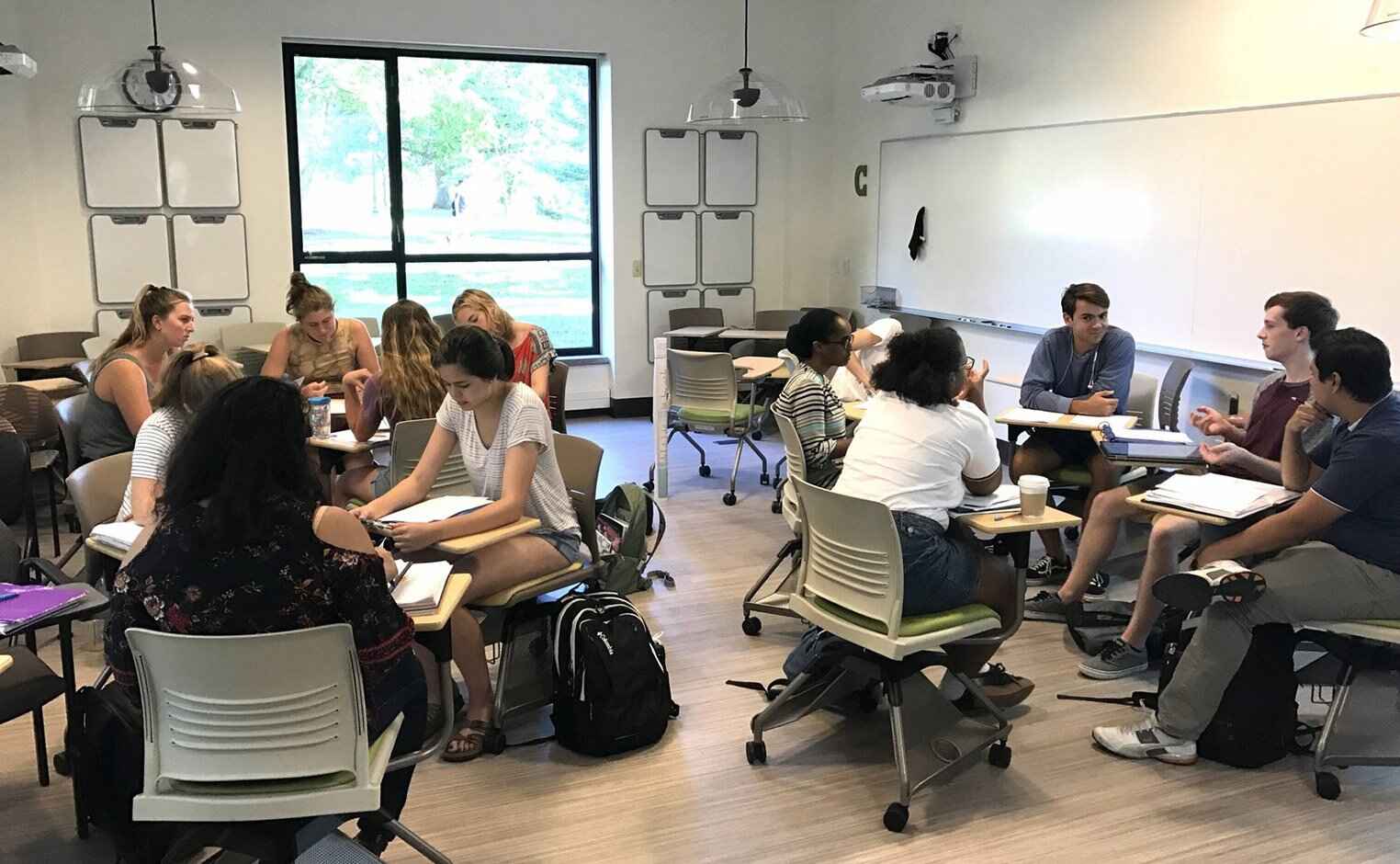
What Is Ability Grouping In Education: Advantages and Disadvantages
Ability grouping is a common practice in education that involves dividing students into homogeneous groups based on their academic performance, abilities, or other relevant criteria. The goal is to provide tailored instruction that meets the specific needs of each group. While this approach has both advantages and disadvantages, it plays a significant role in shaping the educational experience of students. In this article, VTJ will explore the concept of ability grouping, how students are assigned to these groups, the instructional methods employed, and the implications for students.

What Is Ability Grouping?
Ability grouping, also known as tracking or streaming, is the practice of organizing students into classes or groups based on their perceived academic abilities. The purpose is to provide instruction that is better aligned with students’ current levels of knowledge and skills. This can lead to a more customized learning experience for students.
Explore More Teaching Tips: 14 Types of teaching methods for an effective lesson
How Are Students Assigned to Ability Groups?
There are various methods used to assign students to ability groups. These methods may include standardized test scores, teacher evaluations, previous academic performance, or a combination of these factors. The goal is to ensure that students are placed in groups that align with their current skill levels and learning needs.
What Type of Instruction Happens in an Ability Group?

Once students are grouped by ability, instruction can be tailored to meet their specific needs. Common instructional approaches in ability-grouped settings include:
- Pacing: Groups can progress through the curriculum at different speeds, allowing advanced learners to move more quickly and struggling students to receive additional support.
- Differentiated Instruction: Teachers can adapt teaching methods and materials to align with the abilities and learning styles of each group.
- Peer Interaction: Students in similar ability groups can collaborate and learn from each other, fostering a supportive learning environment.
Discover Related Guides: 4 Types of Learning Styles: How to Use VARK Model in Teaching
Advantages of Ability Grouping

Ability grouping can bring about several positive effects for both students and educators. Here are some potential advantages of this practice:
- Individual attention: Students in smaller groups often receive more individual attention from teachers compared to a large classroom setting. With fewer students to focus on, teachers can provide personalized support and address the specific needs of each student more effectively. This individualized attention can enhance learning and promote academic growth.
- Increased participation: When students are grouped based on similar skill levels, they may feel less intimidated and more comfortable participating in discussions and sharing their work with others in the group. This can create a supportive and inclusive learning environment where students feel encouraged to actively engage in the learning process.
- Targeted instruction: Ability grouping allows teachers to tailor their instruction to the needs of a smaller group of students. Instead of trying to meet the diverse needs of all students in a full-sized classroom, teachers can focus on delivering instruction that is specifically designed for the abilities and learning styles of the students in each group. This targeted approach can lead to more effective teaching and improved student outcomes.
Continue Learning: How To Write a Lesson Plan in 6 Steps: The Complete Guide
Disadvantages of Ability Grouping

While ability grouping has its merits, it is important to acknowledge the potential drawbacks associated with this practice. Here are some possible negative aspects of ability grouping:
- Social and Emotional Effects: It can lead to feelings of self-esteem and peer comparisons among students, potentially stigmatizing those in lower-ability groups.
- Inequity: There is a risk that ability grouping can perpetuate educational inequalities. When students are grouped solely based on lower skill levels, there may be a lack of opportunities for them to learn from their peers who possess higher skill levels.
- Rigidity: One concern is that ability grouping may place students on a fixed track from which they find it difficult to transition. Once assigned to a particular group, students may face challenges in moving to a higher-level group, even if their abilities improve over time. This lack of flexibility can limit their opportunities for growth and hinder their academic progress.
Related Guides: Why Students Get Bored & How to Engage Bored Students in the Class
Ability grouping in education is a complex practice with both advantages and disadvantages. While it can provide tailored instruction and improve learning outcomes for some students, it also raises concerns about equity and social effects. The key lies in carefully considering the needs and characteristics of individual students and striving for a balanced approach that maximizes the benefits while minimizing the drawbacks of this educational strategy.
FAQs
What is an example of ability grouping?
An example of ability grouping in education is when elementary school students are separated into different math classes based on their performance in math assessments. For instance, students who excel in math may be placed in an advanced math group, while those who need additional support may be assigned to a remedial math group.
Should gifted students be grouped together?
Whether gifted students should be grouped together is a matter of debate. Some argue that grouping gifted students together allows for more targeted instruction and challenges that meet their specific needs. Others believe that mixing gifted students with their peers of varying abilities promotes diversity and fosters a more inclusive learning environment.
What are the alternatives to ability grouping?
Alternatives to ability grouping include differentiated instruction, where teachers tailor their teaching methods and materials to meet the diverse needs of students within a mixed-ability classroom. Cooperative learning is another alternative, where students work together in small groups to achieve a common goal, regardless of their ability levels.
Is ability grouping the same as cooperative learning?
Ability grouping and cooperative learning are not the same. Ability grouping refers to the practice of grouping students based on their academic abilities, while cooperative learning is a teaching strategy that involves students working together in small groups to achieve shared learning goals. Cooperative learning can be implemented within both mixed-ability and ability-grouped classrooms.
Explore More: 5 Types of Teaching Styles (Their Pros & Cons)






